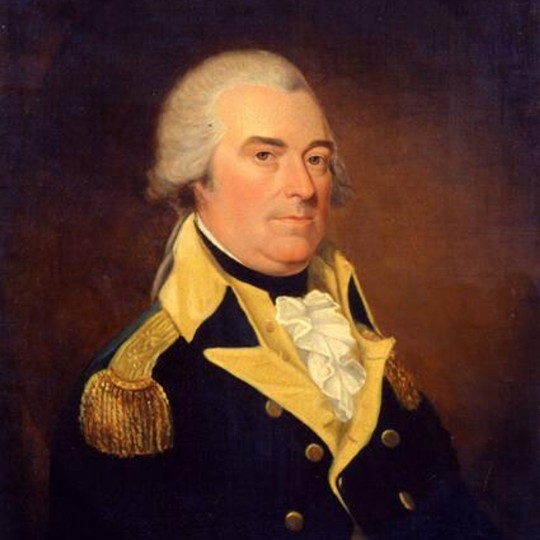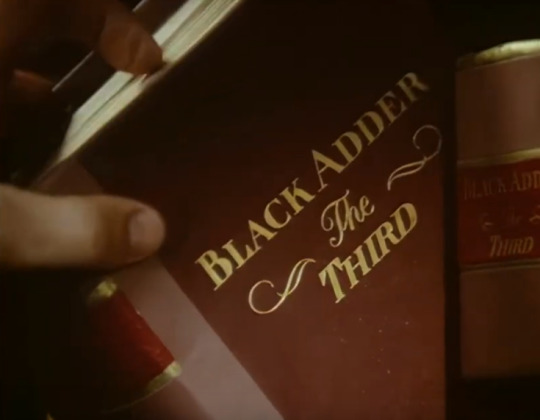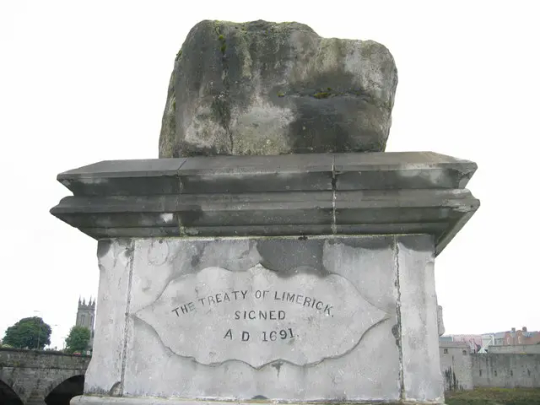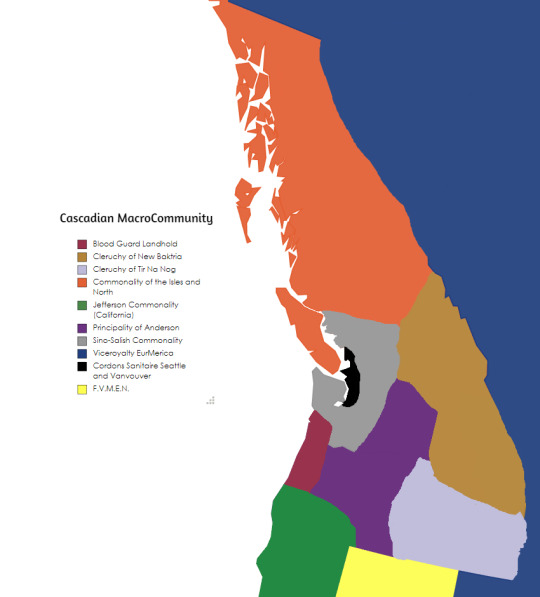#williamites
Text
#OTD in 1689 – Siege of Derry began.
In 1685, the Roman Catholic James II came to the throne of England. His agent Richard Talbot, earl of Tyrconnell, started to dismiss Protestant officers from the army in Ireland, replacing them with Roman Catholics. For English Protestants, the last straw came when the birth of a son to his second wife meant that his Protestant daughter Mary would not succeed to the throne. In the summer of 1688,…

View On WordPress
#Apprentice Boys#Catholic#Derry#Doire#Glorious Revolution#Jacobites#King James II#Lieutenant Colonel Robert Lundy#Maidin City#The Derry City Governor#The Siege of Derry#William of Orange#Williamites
7 notes
·
View notes
Text
SAINT OF THE DAY (June 25)

Image courtesy of William Hart McNichols via Fine Art America.
William of Montevergine, or William of Vercelli (1085 – 25 June 1142), also known as William the Abbot, was a Catholic hermit and the founder of the Congregation of Monte Vergine or "Williamites."
William was born in 1085 to a noble family. He was orphaned as an infant and raised by relatives.
At the young age of 14, he made a pilgrimage to Santiago de Compostela in Spain and decided to devote his life to God as a hermit.
On his pilgrimage to Compostela, William asked a blacksmith to make an iron implement that would encircle his body and increase his suffering. He wore it throughout the pilgrimage.
After he returned to Italy, he intended to go to Jerusalem. For this purpose, he reached South Italy.
However, he was beaten up and robbed by thieves.
He considered this misfortune a sign of God's will to stay in South Italy and spread the message of Christ.
He returned to Italy and lived as a hermit for two years at Monte Solicoli, where he was credited with healing a blind man.
At Monte Vergiliano, his reputation for holiness attracted many disciples, and in 1119, he established a monastery with a Rule based on the Benedictines.
Five other houses were formed during his lifetime but only the original survives today.
He died on 25 June 1142 of natural causes.
William of Vercelli is honored as a saint who was a leader in monastic life — for establishing a number of monasteries and for his rigorous discipline, prayer and fasting, as an example for many monks.
#Saint of the Day#St. William of Vercelli#St. William of Montevergine#William the Abbot#Congregation of Monte Vergine#Williamites
7 notes
·
View notes
Text

The Battle of the Boyne (Irish: Cath na Bóinne IPA: [ˈkah n̪ˠə ˈbˠoːn̠ʲə]) took place in 1690 between the forces of the deposed King James II, and those of King William III who, with his wife Queen Mary II (his cousin and James's daughter), had acceded to the Crowns of England and Scotland in 1689. The battle was fought across the River Boyne close to the town of Drogheda in the Kingdom of Ireland, modern-day Republic of Ireland, and resulted in a victory for William. This turned the tide in James's failed attempt to regain the British crown and ultimately aided in ensuring the continued Protestant ascendancy in Ireland.
The battle took place on 1 July 1690 O.S. William's forces defeated James's army, which consisted mostly of raw recruits. Although the Williamite War in Ireland continued until the signing of the Treaty of Limerick in October 1691, James fled to France after the Boyne, never to return.
0 notes
Text


chronically online woman goes outside
1 note
·
View note
Text
27th July
The Battle of Killiecrankie

Lochiel’s Charge at Killycrankie by James Grant. Source: Wikipedia
On this day in 1689, the Battle of Killiecrankie took place in Tayside. The battle was part of the fighting in Scotland and Ireland that took place following the deposition of King James VII (James II of England) in the Glorious Revolution. Answering James’ call to defend the House of Stuart, many of the Highland clans rose against the new regime of King William III in the Williamite Rebellion. Government forces entered the Highlands under Hugh Mackay and were ambushed in the Pass of Killiecrankie by a Highland army led by Viscount “Bonnie” Dundee. Although initially the Jacobite troops suffered fearful casualties from the continuous vollies of the Williamite force, the government army was unable to withstand a charge by the Highlanders that broke its centre and led to a rout. Despite securing a comprehensive victory, Dundee himself was hit by a musket ball and died of his wound the following day. Mackay was able to rally the government forces and the rebellion was eventually put down. Dundee himself was rumoured to be a warlock who could only be killed by a silver bullet. It is not known whether the ball that did for him was indeed crafted from silver.
On this day in 1526, Peter Treveris’ Grete Herball was published describing various herbal remedies, some still in use to this day. He also warned against cold bathing, which could be fatal and stated that too much drinking of water as a child could lead to death by drowning in later life. Treveris’ recipe for Oil of Violets is particularly helpful: ‘Oyle of vyolettes is made thus. Sethe vyolettes in oyle and strayne it. It will be oyle of vyolettes.’
#battle of Killiecrankie#williamite rebellion#glorious revolution#Peter Treveris#the grete herball#Bonnie Dundee
0 notes
Text
My favourite part of the williamite wars was when king billy said "it's william time!" and then he oranged all over the place
27 notes
·
View notes
Photo

Anthony Wayne
Anthony Wayne (1745-1796), better known by his nickname 'Mad Anthony', was a brigadier general of the Continental Army during the American Revolutionary War (1775-1783). After the war, he briefly served in Congress before resuming his military career, winning a victory over a coalition of Native American nations at the Battle of Fallen Timbers.
Born in Pennsylvania to a family of Irish immigrants, Wayne worked as a land surveyor before joining the Continental Army in 1776. Within a year, he had become a brigadier general, serving with distinction in the Philadelphia Campaign. His finest moment came in July 1779, when he led a nighttime raid against the British garrison at Stony Point, New York, capturing the fort even after sustaining a bullet wound to the head. After the American Revolution, Wayne won election to the House of Representatives as a member of the Federalist Party, working to help strengthen the authority of the federal government. In 1792, he became Senior Army Officer and defeated the Northwestern Confederacy of Native American nations that were contesting the United States' control of the Northwest Territory (modern Ohio). Wayne died shortly after his victory at Fallen Timbers on 15 December 1796, at the age of 51.
Early Life
Anthony Wayne was born on 1 January 1745 at his family's estate of Waynesborough in Easttown, Pennsylvania. He came from a family of Irish Protestants, and his grandfather had fought for the Williamites at the Battle of the Boyne (1 July 1690). In the early 1700s, the Wayne family emigrated from Ireland to the British colony of Pennsylvania, where Anthony's father, Isaac Wayne, found work as a tanner; over the decades, his tannery became the largest in Pennsylvania. In 1739, at the age of 40, Isaac Wayne married Elizabeth Iddings. The couple would have four children, of whom Anthony was the eldest. During the French and Indian War (1754-1763), Isaac served as a captain and raised a company of provincial soldiers. He participated in the 1758 Forbes Expedition to capture Fort Duquesne, in which he served alongside a young Colonel George Washington.
Growing up, Anthony Wayne was expected to inherit the 500-acre Waynesborough and work the fields as a farmer. But Wayne had other plans for his future; having listened to heroic tales of his grandfather's and father's military service as a child, the young Anthony dreamt of winning military glory himself. An insatiable reader, Wayne read all the military histories and classical works he could get his hands on and was soon able to recite both Julius Caesar and William Shakespeare. After completing his education at the College of Pennsylvania, Wayne became a land surveyor. In 1765, he and several of his associates were commissioned by Benjamin Franklin to survey 100,000 acres of land in Nova Scotia. After Wayne surveyed the land, which became the township of Monckton, it was settled by eleven Pennsylvania families of mostly German origin.
In 1763, Wayne married Mary Penrose. The couple had two children: a daughter Margarette (b. 1770) and a son, Isaac (b. 1772). Wayne and his growing family continued to live at Waynesborough, where he split his time between helping his father at the tannery and his own work as a surveyor. But, as relations between the Thirteen Colonies and Great Britain continued to deteriorate, Wayne found that he was being drawn toward the Patriot movement, which opposed the 'unjust' policies of the British Parliament such as taxation without colonial representation. In 1775, a year after the death of his father, Wayne was nominated to the Pennsylvania Committee of Safety, a shadow government run by American revolutionaries; on this committee, he served alongside prominent Patriot leaders like Benjamin Franklin and John Dickinson.
In this position, Wayne became increasingly radical in his disdain for the British, leading his primarily Quaker constituents to remove him from the committee in October, for fear that he had become too war hawkish. By now, the American Revolutionary War was underway and rapidly escalating. With his brief foray into politics over, Wayne could now follow his childhood dream and enter the military.
Continue reading...
16 notes
·
View notes
Text
King William III and His Worst Nemesis
(Who was as cunning as a fox what used to be Professor of Cunning at Oxford University but has moved on and is now working for the U.N. at the High Commission of International Cunning Planning)

Mural in Belfast, image by Yamen, via Wikimedia Commons.
So, I noticed something. This is the Loyalist Sandy Row mural in Belfast. It features William III, the royal cypher of William and Mary, some decorational elements such as the crown, orange lily and representations of soldiers of the Williamite army and... this font (set in bold on the mural):

The British designer Bob Anderton designed ITC Blackadder in 1996, basing the name off the hit historical comedy TV series, and having taken inspiration from from ornate examples of 16th century handwriting in general, added a certain eerily trembling je ne sais quoi drawn from the post-torture signatures of Guy Fawkes:

Clearly however, his most prominent source of inspiration was the first appearance of Edmund, the Black Adder on British TV screens in 1983:

And here for comparison, The Black Adder in Anderton's ITC Blackadder:

The font used in the first series did not reappear throughout the series; seasons 2, 3 and 4 used different designs that aimed to immitate the artistic style or if you will, 'vibe', of the period it is set in:



But why am I telling you all this? And where does the Sandy Row mural tie into it all?
Well, in the intro to Blackadder the Third, we see this book on the shelf:

Clearly alluding to the Jacobite Rebellions of 1715 and 1745, the intro implies that one of the Blackadder-incarnations must have been de-throned in the Glorious Revolution, with subsequent generations attempting to reclaim the throne, leading to said rebellions.
In the Blackadder-universe, it is thus all but established, James II did not exist. In his place, a Blackadder must have reigned (they do have royal blood going back to the Plantagenets after all, and the existence of Blackadders throughout the centuries implies that Prince Edmund, the "Black Vegetable", must have had offspring, however (il-)legitimate) and been dethroned by William III, presumably jointly with whoever the Blackadder family-equivalent of Mary II was.
TL;DR: most of the writing on the Sandy Row William of Orange mural is designed in the font of William's (fictional) enemy, a late 17th century member of the Blackadder family.
Now please, will someone be so kind and give me that spin-off? Two somewhat unpleasant, cynical, manipulative little men in huge dark wigs scheming against another anno 1688? And this time, Blackadder actually succeeds in his designs and takes the throne? Pretty please?
Here, I even prepared a chart:

58 notes
·
View notes
Text
i’m no historian but the Wars of the Three Kingdoms did not end in 1653. it ended in 1691
“peace” may have occurred in 1653, as in no faction was engaging in war with another, but it absolutely was not peace. not only was the most severe genocide in early-modern europe still ongoing, but the aftermath of the 20 april coup brought brutal repressions by the military governors. conflict was still ongoing
and it’s unhelpful to label 1653 as the end of the period of actual warfare. there were the sealed knot uprisings, the naval wars with Netherland and Spain, monck’s coup (which would’ve been a violent uprising had the pro-regime forces not immediately surrendered to him), and the millenarian insurrection of january 6 (not kidding)
but my biggest gripe with the 1653 reckoning is it doesn’t encompass the revolution of 1688 and ensuing williamite-jacobite war, events which resulted in the passing and reneging of the treaty of Limerick (allowing for the anglo-protestant ascendency in Ireland), the act of settlement 1701 which de facto annexed Scotland, all of which contributed to continuing violent persecution of catholics across the isles. i’d argue that the brutality in Ireland even after the fall of Cavan fits the definition of war - the act of settlement 1652 and the ethnic cleansing and slavery of Hell-or-Connaught was a violent war on the Irish people, even though Ireland as a polity was no more
the end of the Commonwealth-Covenant-Confederation Wars (or, perhaps, war) in 1653 was a cessation of interfactional/interstate warfare but it was not a cessation of violence and belligerency and it was not the end of this period of historically impactful conflicts. the lasting realignment of the political system in the so-called three kingdoms was the revolution of 1688. this realignment brought the abolition of one of the ‘three kingdoms’, the transformation of another into a segregatory sectarian settler-colonial state (which would precipitate its total annexation 100 years later as a way of diluting the effects of the necessary climbdown on catholic persecution, which would precipitate the genocide of the great hunger, all of which ultimately led to the 1916 uprising and the partition), and the establishment in the other of the whig-tory political order which ruled the country (and over its neighbours) for 150-ish years unchallenged, and for the past 200-ish years with the pretension of electoral democracy
there was a ceasefire in 1653, yes, which was when a period of overlapping wars on the isles came to an end under the dominance of the military dictatorship. but a broader definition, a 52-year period of conflict, is needed to offer this period its necessary provenance. focusing only on the 1639-1653 wars does a disservice to the historical importance of the other conflicts, especially the revolution in England and the anti-jacobite subjugation in Ireland. acting like conflict ended in 1653 presents monck’s putsch as universally welcome, the 1688 revolution as politically inconsequential, charles stuart ii and william orange as heroes, and Irish history as irrelevant
a taxonomical term could or should exist for the 1639-1653 wars. but that which should be the wider umbrella term for this period of conflict, the Wars of the Three Kingdoms (or your favourite synonym), is way bigger than that
3 notes
·
View notes
Text
#OTD in 1691 – Treaty of Limerick is signed, ending the Williamite War in Ireland.
Treaty of Limerick is signed ending the Williamite war between the Jacobites and the supporters of William of Orange. The Treaty, was signed on a stone in the sight of both armies at the Clare end of Thomond Bridge on the 3rd of October 1691.
The stone was for some years resting on the ground opposite its present location, where the old Ennis mail coach left to travel from the Clare end of…

View On WordPress
#Co. Limerick#England#History of Ireland#Ireland#Irish History#Jacobites#Thomond Bridge#Treaty of Limerick#Treaty of Limerick Stone#Williamites
6 notes
·
View notes
Text
Beata Vergine delle Grazie / Our Lady of Grace-Romagna, Italy (1548)
Beata Vergine delle Grazie / Our Lady of Grace/Our Lady of the Bowed Head, Montegridolfo, Rimini, Emilia-Romagna, Italy (1548) – 25 JuneHERE:https://anastpaul.wordpress.com/2017/06/25/25-june-the-feast-of-our-lady-of-grace/
St William of Vercelli (1085-1142) Hermit, Abbot, Founder of the Congregation of Monte Vergine, or “Williamites,” Miracle-worker, Marian devotee. His Body is…

View On WordPress
5 notes
·
View notes
Text
Down Memory Lane
On the east side of the Shannon in Athlone, County Westmeath can be found the remains of a church begun by Franciscan friars in the 1680s. This was intended to replace an earlier lost building erected by members of the order in the 13th century but some 300 years later. However, the upheavals of the Williamite Wars and subsequent legislation against Roman Catholic religious bodies meant the work…

View On WordPress
2 notes
·
View notes
Text
Btw 1 piece of behind the scenes RRL trivia is that I regularly get williamite wars ballads stuck in my head because I listened to approx. 10000 of them so that I could accurately depict the songs lazarus might have in his repertoire. horrible state of affairs
#let the solllldiers rejoyyyyyyce in general voiiiice and the senate new honours and gloryyyy decree em I hate it here#wip: rrl#jory.txt
2 notes
·
View notes
Photo

On February 4th 1685 King Charles II died and his wee brother, James VII became king.
James was the first Scottish monarch to be born in England,
In 1660, Charles II was restored to the throne of England, eleven years after his father, Charles I had been executed by Parliamentary forces commanded by Oliver Cromwell.
When he died suddenly at the age of 54 without any legitimate children to inherit his throne, he was succeeded by his brother, James.
James VII and II was devoutly Catholic. Initially, Protestants tolerated his reign. His successors, his daughters Mary and Anne, were both Protestant, so James’s Catholicism was seen as a temporary aberration. When his second wife, the equally devoutly Catholic Mary of Modena, gave birth to a son in 1688, a group of leading Protestants decided to take action.
Fearing a permanent Catholic dynasty, they invited William, the Prince of Orange and husband (and cousin) of James’s daughter Mary, to come to Britain with an army – an event which became known as the ‘Glorious Revolution’.
When anti-Catholic riots broke out in London, James sent his wife and son to safety in France. He attempted to follow them, but was captured and returned to the city. William had no desire to imprison James and allowed him to sail for France, where he was reunited with his family.
After James’s flight, the English parliament deemed him to have abdicated and offered the throne to Mary and her husband. William III and Mary II were crowned joint monarchs of England on 13th February.
Early in 1689 James sailed to Ireland backed by French troops and confident of support from the largely Catholic population. Yet unlike James’s raw recruits, William’s army was well trained, and when they met in battle in 1690, William was victorious and James fled back to France. There were now two Stuart camps, the Williamites, and Jacobites, taken from the Latin for James, Jacobus.
Louis XIV, the Catholic King of France, offered his exiled cousin a palace and a pension. James would never set foot on English or Scottish soil again.
In September 1701, he died of a brain haemorrhage, and his son James Francis Stuart was officially recognised by Louis XIV as King James VIII and III.
After the birth of his eldest son, Prince Charles Edward, James VIII and III became widely known as the ‘Old Pretender’. Although this meant a claimant to a throne, it was often used disparagingly by those who opposed his aims to restore the Stuart dynasty to the three kingdoms.
The pic, by an unkown artist shows the brothers, Charles and James.
18 notes
·
View notes
Text
Setting Blurb: The Cascadia MacroCommunity
Because @hawkin-byrd asked.


The sieges of Chicago and St. Louis were bloodbaths.
The first Emperor, Ignacio I Rotthey, lost his firstborn in the South Africa incorporation.
Cascadia, was the first region where the soon-to-be Emperor lost a close friend. And took it out on the vanquished.
Cascadia was, prior to its incorporation into the League, home to several strong protostates organized around non-Imperial ideas following the Collapse and Warlord period of the post-WWIII world. As likeminded strongmen in North America came to talks and proposed unification, the protostates in Cascadia, allied with Chicago, other parts of Canadian, and New York to counter the warlords' potential expansion. Ignacio, then simply a Texan tribal chieftain, used this alliance as a means of solidifying the warlords' coalition and pave the way for what would evolve into the modern Imperial League. The warlords' coalition, known then as "The League" declared war on the rivals.
While inspecting the frontlines in a convoy near Portland, an IED detonated, killing one of Ignacio's closest friends. Enraged at the act, Ignacio ordered League troops to show little-to-no quarter on the opposing forces in Portland, and to impose a victor's justice on the rest of Cascadia. Once the region was pacified, reconstruction began. Cascadia was one of the first "National Delimitation Zones", territory that was to be dissected by anthropologists and ethnographers to create provinces along ethnoterritorial lines. Unlike other NDZs, Ignacio applied a "personal touch" with the population transfers and border delimitation, particularly towards those that showed the most resistance.
Blood Guard Landhold: In the aftermath of the IED attack killing his best friend, Ignacio awarded all survivors a new award, the Blood Diamond. Awardees of the Blood Diamond (and their descendants) were then organized into the first bodyguard unit to defend the future Imperial Household: the Blood Guard. The Williamite Valley (including the ruins of Portland) were given as a fief to the Blood Guard and would serve as the blueprint for the many Land Force Demesnes scattered throughout Imperial territory. Unlike other LFDs, martial tribes do not muster to prove their worth as Soldiers. Only recipients of the Blood Diamond, or a descendant can join the Blood Guard.
Commonality of the Isles and North: The First Nations of Canada and Alaska were spared the more excessive portions of the delimitation of Cascadia, so long as they quickly handed over any survivors from the conquests Seattle and Vancouver. The Haida and Tlingit ended up forming the predominant leadership of the Commonality.
Cleurchies of New Baktria and Tir Na Nog: Carved out from the Columbia Mountains and Snake River valley, respectively, the two Cleurchies were created to house military veterans from the many wars of the early Imperial League. Those original inhabitants that were not relocated simply adapted to becoming specialized Attendant Laborclades. New Baktria was meant for veterans across the League, and Tir Na Nog for fighters from the Hispano-Gaelic movement (of which Ignacio was a part of).
Principality of Anderson: The capitol region of the MacroCommunity, the territory around the Columbia Plateau was named after the friend of Ignacio killed in the Cascadia campaign. Before the Human-Crystalline War and the nuclear devastation of the Earth, the member of the Imperial Family most likely to be declared heir would be given the title "Prince of Anderson".
Sino-Salish Commonality: The Commonality surrounding Seattle and Vancouver serves as the homeland for the Chinese-Canadians and the Salish-speaking First Nations native to the region. While most members of the communities keep to themselves, a small admixture has formed from the two groups.
Cordons Sanitaire Seattle and Vancouver: The two cities that put up the most resistance to the warlords' seizure of Cascadia (excepting what remained Portland) and the areas between them were used as "open air internment camps" to house the League-to-be's vanquished enemies. These cities were then "granted" independence, and serve as "Cordons Sanitate" for anti-Imperial thought. Anti-Imperials from Southwest Asia and Eurasia were relocated to the Cascadian Cordons.
13 notes
·
View notes
Text
Last week I had a couple really sleepless nights and so what better to do than go down a deep Wikipedia rabbit hole for hours in the middle of the night? I started reading about Christianity in the United States, the sects/denominations that are more or less unique to the US and the history of how they came about. I think I understand things a little bit better about why America is Like That. Combining this knowledge with the (admittedly little) knowledge I have of the Williamite war in Ireland (from a similar Wikipedia rabbit hole I went down a couple months ago on a sleepless night - yes this is how I live), I have come to this conclusion:
It's always the fucking Protestants isn't it
2 notes
·
View notes